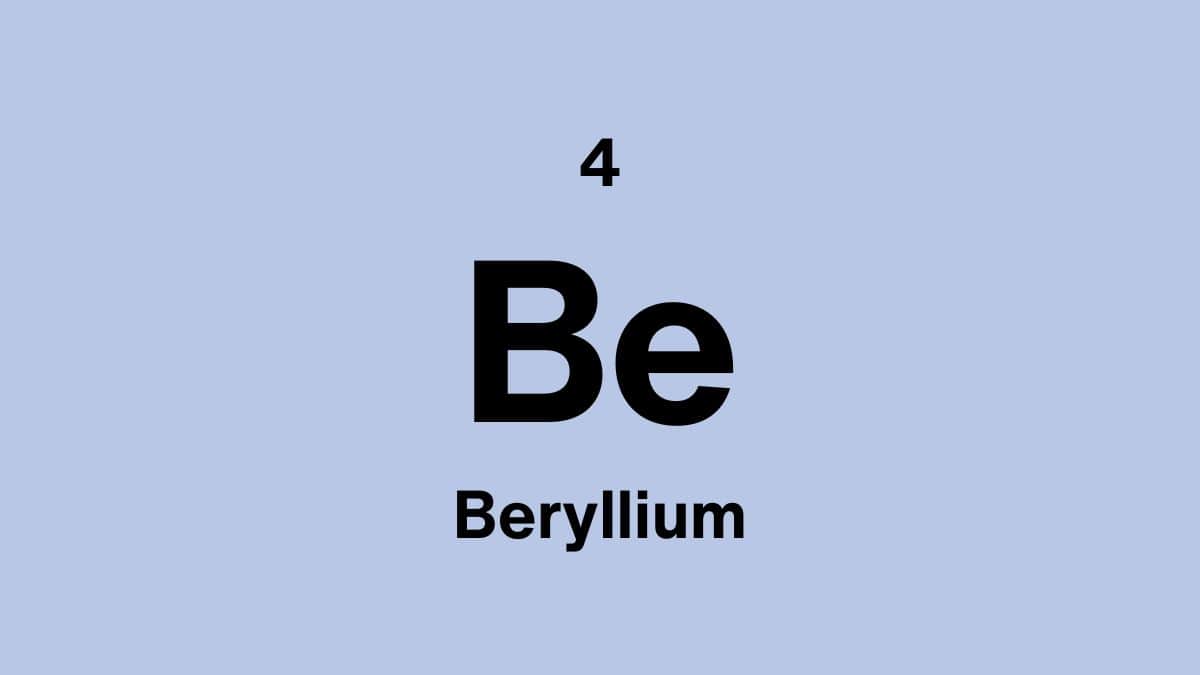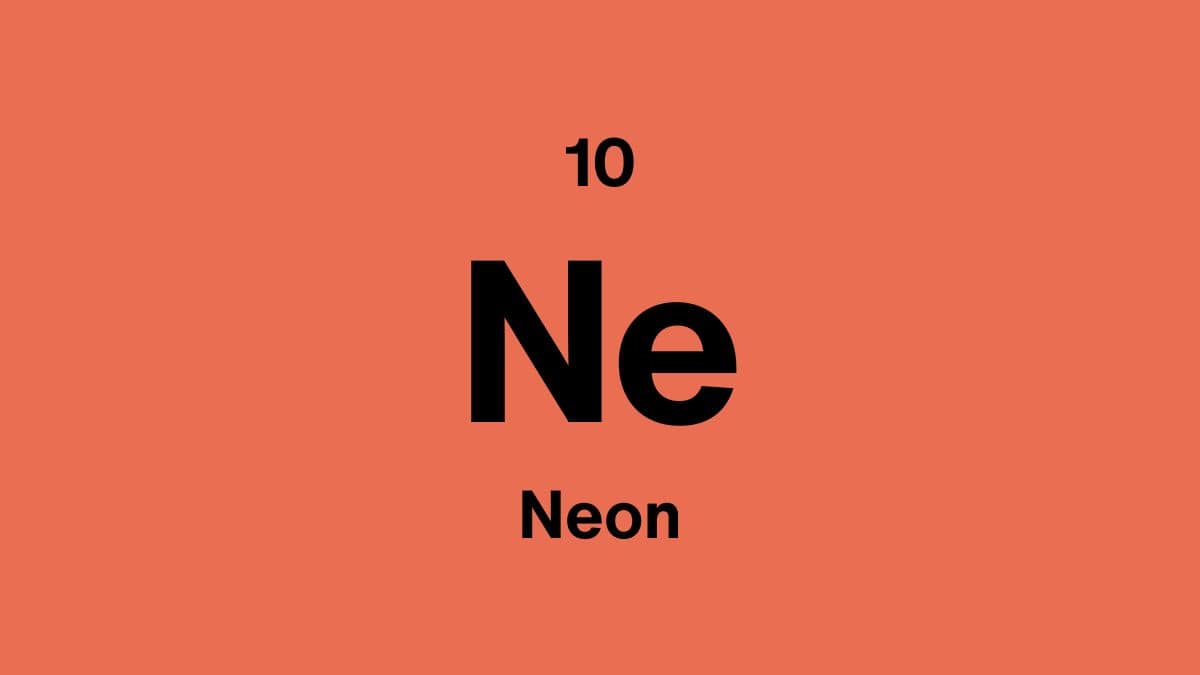The noble gas that proved scientists wrong and transformed modern medicine
Noble gases occupy Group 18 of the periodic table and were long considered completely inert, unable to form chemical compounds. These elements have completely filled outer electron shells, making them extraordinarily stable and unreactive under normal conditions. Noble gases exist as monatomic gases at room temperature, meaning their molecules consist of single atoms rather than bonded pairs. They are colorless, odorless, tasteless, and non-flammable. The term noble reflects their chemical aloofness, as they rarely interact with other elements. However, in 1962, xenon shattered this assumption by forming the first noble gas compound, revolutionizing our understanding of chemical bonding.
In this article, we explore xenon's properties, its paradigm-shifting discovery, groundbreaking compounds, critical applications in medicine and space exploration, and the challenges of producing this extremely rare gas.
Properties of xenon
| Atomic Number: | 54 |
| Atomic Symbol: | Xe |
| Atomic Weight (amu): | 131.293 |
| Electronegativity: | 2.6 |
| Melting point: | -111.75°C | -169.15°F | 161.40K |
| Boiling point: | -108.09°C | -162.56°F | 165.06K |
What does xenon look like?
Xenon is a colorless, odorless, tasteless gas more than 4.5 times heavier than air, making it the densest of the non-radioactive noble gases. When an electrical discharge is passed through xenon gas in a vacuum tube, it produces a beautiful, bright blue glow with a slight lavender tinge. Under high pressure at low temperatures, xenon can be liquefied into a colorless liquid. At even lower temperatures, it solidifies into a crystalline white solid with a face-centered cubic crystal structure, where individual xenon atoms are packed together as closely as possible, behaving as perfect spheres.
Will we ever run out of xenon?
Xenon is one of the rarest elements on Earth, present in the atmosphere at only 0.0000086 percent by volume, or approximately one part in twenty million. This makes xenon about 50 times more expensive than neon. Despite approximately two billion tons of xenon existing in Earth's atmosphere, its extreme scarcity relative to other gases makes extraction challenging and costly. Xenon is also present in the Martian atmosphere at 0.08 parts per million.
The mystery of xenon's rarity puzzles geochemists, who note that xenon should be more abundant based on cosmic abundance patterns. Some scientists suspect the missing xenon may be trapped in water clathrates deep in the oceans or locked within silicate rocks in Earth's mantle. Despite its scarcity, the atmospheric reservoir is large enough to meet current demand, and xenon is continuously produced by radioactive decay of iodine-129 and iodine-131, ensuring long-term availability.
Can xenon be recycled
Yes, xenon can be recycled, and given its high cost and rarity, recycling is economically important. Recovery and reuse help conserve this valuable resource and reduce production costs for industries dependent on xenon.
Recycled xenon is commonly sourced from:
- Ion propulsion systems on satellites and spacecraft
- Medical anesthesia equipment and breathing circuits
- High-intensity discharge lamps and flash tubes after use
- Semiconductor manufacturing processes and plasma etching systems
Where can xenon be found?
Xenon does not occur in concentrated deposits and must be extracted from the atmosphere or other sources where it exists in trace quantities. The element is obtained exclusively as a byproduct of industrial air separation processes.
- Earth's Atmosphere: Contains xenon at 0.0000086 percent by volume, or about 1 part in 20 million. This atmospheric source provides all commercial xenon through air liquefaction and fractional distillation.
- Mineral Springs: Some mineral springs emit gases containing trace amounts of xenon, though this is not a commercial source.
- Nuclear Reactors: Xenon-133 and xenon-135 are produced by uranium fission. Xenon-135 has a 9.2-hour half-life and is problematic because it absorbs neutrons, potentially poisoning reactor operations.
- Radioactive Decay: Stable xenon-129 is produced by radioactive decay of iodine-129, which has a half-life of 17 million years. This process has contributed to atmospheric xenon over geological time.
Xenon is produced primarily in countries with large industrial gas operations, including the United States, Japan, Russia, China, and European nations. World production is approximately 60 tons or 10 million liters annually. The gas is extracted from air liquefaction plants as a byproduct when producing oxygen and nitrogen.
Is xenon expensive?
Yes, xenon is one of the most expensive gases due to its extreme atmospheric rarity and energy-intensive extraction process. Xenon typically costs approximately 1.20 dollars per gram, making it about 50 times more expensive than neon. The high cost limits widespread use and makes xenon practical only for applications where its unique properties provide significant advantages that justify the expense, such as medical anesthesia, spacecraft propulsion, and specialized lighting.
Does xenon have a biological role?
Xenon has no known essential biological role in normal human physiology or in other living organisms. However, xenon exhibits remarkable biological activity as a medical anesthetic and neuroprotective agent. Xenon was first successfully used as a surgical anesthetic in 1951 by American anesthesiologist Stuart Cullen. The gas works by blocking NMDA receptors in the brain, producing rapid unconsciousness with minimal side effects.
Xenon anesthesia has several advantages including rapid onset, quick recovery, cardiovascular stability, and neuroprotective properties that may help prevent brain damage during surgery. These benefits make xenon particularly valuable for high-risk patients and certain surgical procedures. However, xenon's extreme cost, approximately 15 percent of annual world production is used for anesthesia, limits its widespread adoption despite superior medical properties. Xenon is not toxic itself, and being a noble gas, it does not react with body tissues or participate in metabolic processes.
What is pure xenon used for?
- Medical Anesthesia: Xenon produces rapid, safe anesthesia with few side effects and neuroprotective properties. First used successfully in 1951, it provides cardiovascular stability and quick recovery, consuming approximately 15 percent of world production despite high cost.
- High-Intensity Lighting: Xenon produces bright white light resembling daylight when electrically excited. Used in automobile headlights, photographic flash units, stroboscopic lamps, film projector bulbs, stadium lighting, and searchlights.
- Spacecraft Ion Propulsion: Xenon is the preferred propellant for ion thrusters on satellites and deep space missions. Its high atomic mass, low ionization energy, and ability to be stored as liquid near room temperature make it ideal. Used on NASA's Deep Space 1, Dawn spacecraft, and numerous satellites.
- Medical Imaging: Radioactive xenon-133, with a 5.27-day half-life, is used in photon emission tomography for examining heart, lung, and brain function. Hyperpolarized xenon-129 enables magnetic resonance imaging of gas flow in lungs.
- Ruby Laser Excitation: Xenon flash lamps excite ruby crystals to generate coherent laser light used in various scientific and industrial applications.
- Semiconductor Manufacturing: Xenon difluoride etches silicon microprocessors and is used in plasma etching for microelectromechanical systems production.
- Bactericidal Lamps: Xenon emits safe ultraviolet light for sterilization in food preparation areas, hospitals, and water treatment facilities.
- Nuclear Energy Applications: Xenon is used in bubble chambers and radiation detectors. Large underground xenon detectors search for dark matter particles and study neutrinos.
What are the main compounds with xenon?
- Xenon Hexafluoroplatinate : The first noble gas compound ever synthesized, created by Neil Bartlett in 1962. This yellow-orange solid is formulated as a mixture of [XeF+][PtF6−], [XeF+][Pt2F11−], and related salts, revolutionizing chemistry by proving noble gases could form compounds.
- Xenon Difluoride (XeF2) : A white crystalline solid produced by exposing xenon and fluorine to ultraviolet light. Commercially available and used to etch silicon microprocessors and in synthesis of the anticancer drug 5-fluorouracil.
- Xenon Tetrafluoride (XeF4) : A colorless crystalline solid synthesized by heating xenon and fluorine at high temperature and pressure. Used in chemical synthesis and fluorination reactions.
- Xenon Hexafluoride (XeF6) : A colorless solid that is the strongest fluorinating agent among xenon fluorides. Highly reactive and used in specialized chemical synthesis requiring powerful fluorination.
- Xenon Trioxide (XeO3) : A white, crystalline solid that is dangerously explosive and a powerful oxidizing agent. Detonates when heated above 25 degrees Celsius or struck mechanically. Used only in controlled research settings.
- Xenon Tetroxide (XeO4) : An extremely unstable yellow crystalline solid and the most powerful oxidizer among xenon compounds. Explosive and highly dangerous, exploding at temperatures above minus 40 degrees Celsius.
- Sodium Perxenate (Na4XeO6) : A yellow solid used as an oxidizing agent in analytical chemistry. Formed by alkaline hydrolysis of xenon hexafluoride.
- Xenon Clathrate Hydrate (Xe·5.75H2O) : A clathrate compound where xenon atoms are trapped in cages formed by water molecules. Has a melting point of 24 degrees Celsius and may exist naturally under high pressure conditions in deep oceans and Antarctic ice.
Who discovered xenon?
Xenon was discovered on July 12, 1898, by Scottish chemist Sir William Ramsay and English chemist Morris William Travers at University College London. The pair had already successfully isolated the noble gases neon, argon, and krypton from liquid air using fractional distillation techniques, and they suspected that more undiscovered gases might exist in the atmosphere.
The wealthy industrialist Ludwig Mond, recognizing the importance of their work, provided Ramsay and Travers with a new liquid-air machine, which they initially used to extract more krypton from liquid air. By repeatedly distilling this krypton sample multiple times, they eventually isolated a heavier gas residue. When they placed this mysterious substance in a vacuum tube and passed an electrical discharge through it, the gas produced a beautiful, intense blue glow unlike anything they had seen before.
Realizing they had discovered yet another member of the inert gas family, Ramsay and Travers named the new element xenon, derived from the Greek word xenos meaning stranger or foreign, reflecting its rarity and exotic properties. For the next 64 years, xenon and the other noble gases were believed to be completely chemically inert and unable to form compounds. This assumption remained unchallenged until March 23, 1962, when British chemist Neil Bartlett at the University of British Columbia synthesized xenon hexafluoroplatinate, the first noble gas compound ever created. This groundbreaking discovery revolutionized chemistry and earned Bartlett international recognition. Since then, more than 100 xenon compounds have been synthesized, including fluorides, oxides, oxoacids, and organometallic complexes.
Is xenon dangerous?
Elemental xenon is not toxic and poses minimal health risks under normal conditions. However, xenon is a simple asphyxiant, meaning it can displace oxygen in confined spaces and cause suffocation through oxygen deprivation rather than chemical toxicity. Inhalation of xenon in moderate concentrations causes dizziness, nausea, and altered perception. At higher concentrations, xenon can cause vomiting, loss of consciousness, and in extreme cases, death from asphyxiation if oxygen levels drop too low.
Xenon has anesthetic properties and affects the central nervous system, which is why it is used medically as an anesthetic gas. Under controlled medical conditions with proper oxygen supplementation, xenon anesthesia is remarkably safe with few side effects. However, recreational inhalation of xenon or other noble gases is extremely dangerous and can result in sudden death.
In contrast to elemental xenon, many xenon compounds are highly toxic and dangerous due to their strong oxidizing properties. Xenon trioxide and xenon tetroxide are dangerously explosive and can detonate with mechanical shock, heat, or contact with organic materials. These compounds must be handled only by trained professionals using specialized safety equipment in controlled laboratory environments. Workers handling xenon gas should ensure adequate ventilation to prevent oxygen displacement.
Fun facts about xenon
- Natural xenon consists of nine stable isotopes, with xenon-132 and xenon-129 being the most abundant at 26.89 percent and 26.44 percent respectively. More than 40 unstable radioactive isotopes have been characterized, with half-lives ranging from microseconds to billions of years.
- In November 1989, IBM scientists used a scanning tunneling microscope to spell out the three letters IBM using exactly 35 individual xenon atoms on a chilled nickel crystal surface. This demonstration was the first time atoms had been precisely positioned on a flat surface, marking a milestone in nanotechnology.
- Xenon found in certain stony meteorites shows unusually high proportions of xenon-129, believed to result from radioactive decay of iodine-129 during the solar system's early formation. Measuring xenon-129 content helps scientists understand the solar system's history and timeline.
- Under extreme pressures exceeding several hundred kilobars, xenon transforms into a metallic phase with unusual properties. Metallic xenon appears light blue because it absorbs red light while transmitting other visible wavelengths, demonstrating quantum mechanical effects.
- Liquid xenon has extremely high polarizability, allowing it to dissolve hydrocarbons, biological molecules, and even water. This unusual solvent property makes liquid xenon valuable for certain specialized chemistry applications and particle physics detectors.
- Xenon-135 produced in nuclear reactors is called a neutron poison because it has the highest known thermal neutron capture cross-section of any nuclide. This property makes xenon-135 problematic in reactor operations, as it absorbs neutrons needed for fission reactions.
- Hyperpolarized xenon-129 can be inhaled and imaged using magnetic resonance techniques to visualize lung ventilation and gas exchange in unprecedented detail, providing diagnostic information impossible to obtain with conventional imaging methods.
- The most exotic xenon compound discovered contains four xenon atoms bonded to a central gold atom, forming the ion [AuXe4]2+. This remarkable compound is stable only at temperatures below minus 40 degrees Celsius.
Scientific data verified from RSC, Britannica, and the Minerals Education Coalition.



